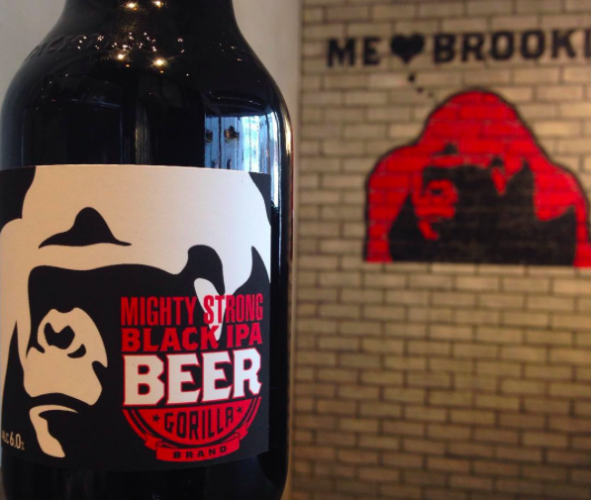There are so many amazing coffee roasters in NYC and Brooklyn that we easily could have added another 20 names to this list. But we narrowed it down to the 10 we like best. Hope you find something new and exciting to try!
10. City Of Saints Coffee Roasters
Brooklyn-born roaster City Of Saints unites people, businesses, and the community around them through good coffee. Their beautiful and massive space in Bushwick also brings local roasters together where they can roast on City of Saint's new Loring S35. Definitely reach out to them if you're looking to get into roasting but don't have $90,000 to drop on a 2-story tall roaster. Their
Kenya Watuha is excellent so is the
Sumatra. And what about that packaging design?! Totally cool.

9. Lofted Coffee
In a stylish 1000 square foot loft in Brooklyn that most people dream of living in, you'll find the guys of Lofted Coffee and their gorgeous cat perfecting the art of coffee. They focus on quality green beans and roasting to Scandanavian standards of delicacy. Their Colombia
Narino and Colombia
Pompeya are flawless cups!

8. Luft Coffee
Bespoke coffee is alive and well in New York City thanks to the guys at
Luft Coffee. Their light, clean style is embodied in their aesthetic and roasting style. Their method and style is unique and really brings out the nuances of the bean. The talent comes through in every cup and they are definitely a roaster to look out for! The Colombia
Huila is our favorite, so complex that you discover a different flavor/fruit in every sip.

7. Joe Bean Coffee Roasters
Behind the excellent coffee at
Joe Bean is a dedicated team that loves sharing experiences, whether coffee or culinary. Drink and food is their motivation and innovating fresh new ideas for coffee is one of them. Creating a new coffee-loving city in Rochester is very exciting and we cannot wait to see the coffee adventures the future holds for them! Their
Uganda Buginyaya is a must try. Super exciting cup with graham cracker mixed with winter spices. Ginger, nutmeg, and cinnamon are present with apple and pear acidity.

6. Peaks Coffee
"In the depressing winter of 2014, Peaks was born in a snowy backyard on a cast iron skillet." And the rest is coffee goodness history. The team at Peaks Coffee want to share every coffee drinker's peaks and valleys in life over a great cup of coffee. Their beautiful mission comes with beautiful coffee. We are definitely excited to be working with such a great roaster. Try their
Ethiopia Guji. Unmistakeable peach shines through and lingering cotton candy sweetness make this coffee a dream.

5. Gimme Coffee
One of the leaders in the specialty coffee scene in New York,
Gimme Coffee is one of our favorites. this award-winning roaster is truly talented and their coffees are always excellent and well crafted. Consistency and quality is always present and the team at Gimme is dedicated with improving the coffee community around them. Their
Congo beans were out of this world. Very complex, with the flavor of a Kenyan a body of a Sumatran.

4. Copper Horse Coffee Roasters
Art and science come together at the small batch roastery of
Copper Horse Coffee in Ithaca, NY. A lot of love and hard work goes into every batch and they carefully roast the beans taking into consideration the different factors that each individual bean has. This award winning roaster is a true gem. The award winning
Enrique Torres Colombian is a favorite, as well as the
Panama Carmen Estate

3. COFFEED
Great coffee and doing good for the world is what
COFFEED is all about. One of the very first local roasters we worked with, their commitment to charity is inspiring and the coffees are always interesting and fun. Their
Cameroon Oku Valley was one of the most interesting cups we've had. Snappy acidity with an upfront earthiness and a mild sweet finish make it a must try!

2. Gorilla Coffee
Another Brooklyn-born roaster,
Gorilla Coffee boasts fantastic espressos not only for New Yorkers but also people in Tokyo pining for third wave coffee from the U.S. thanks to new Gorilla Coffee that opened there. Exceptional quality and top notch equipment make Gorilla Coffee a consistently great cup. And their owner, Carol is so much fun!

1. Cafe Integral
Keep an eye out for Cesar Vega and his team at
Cafe Integral. They are raising the bar in the coffee community, introducing exceptional Nicaraguan coffees to New Yorkers and beyond (they also have a cafe in Chi-town). They are a dedicated group, very proud of their product and rightfully so. Their honeyed
Maracaturra is complex but clean and crisp with a hefty and comforting body perfect to start your day with.

Want to try more coffee?
Angels' Cup is an online coffee tasting club where subscribers get to blindly sample up to 208 different coffees per year, from over 100 top 3rd wave roasters. Small samples sizes mean you get to sample more coffees for less money. Tasting flights start at only $8.99!
Join Angels' Cup Today!















 If this is literally your first time brewing single cups of coffee at home, and you don't own any equipment or know where to start, buy this
If this is literally your first time brewing single cups of coffee at home, and you don't own any equipment or know where to start, buy this